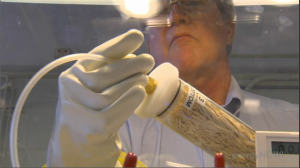The Navy has reached a milestone in the quest to gain energy independence with the first unmanned biofueled flight of an MQ-8B Fire Scout at Webster Field in St. Inigoes, Md. The unmanned helicopter was fueled with a combination of JP-5 aviation fuel and plant-based camelina.
The MQ-8B Fire Scout Vertical Take-Off and Landing Tactical Unmanned Aerial Vehicle provides critical situational awareness, intelligence, surveillance, reconnaissance (ISR), and targeting data to the forward deployed warfighter. Fire Scout is designed to operate from all air capable ships and is currently providing ISR support during its first-land based deployment in U.S. Central Command area of responsibility.
 Follow
Follow





